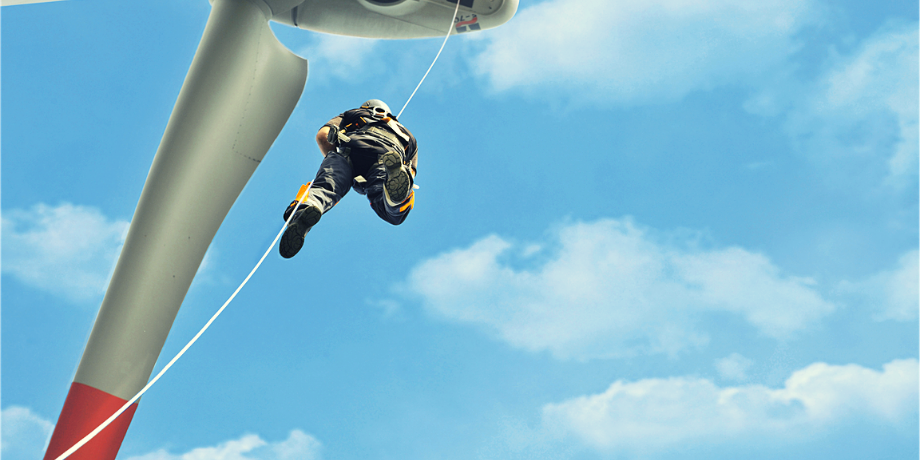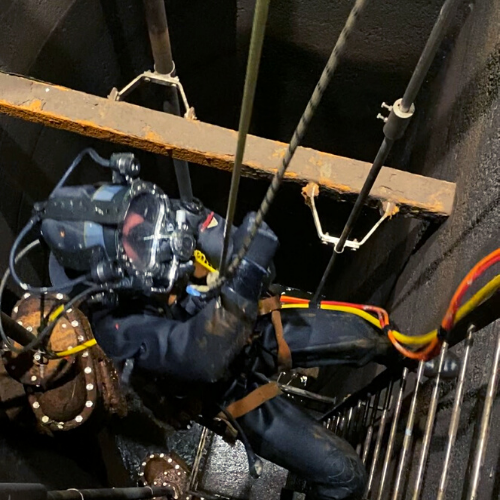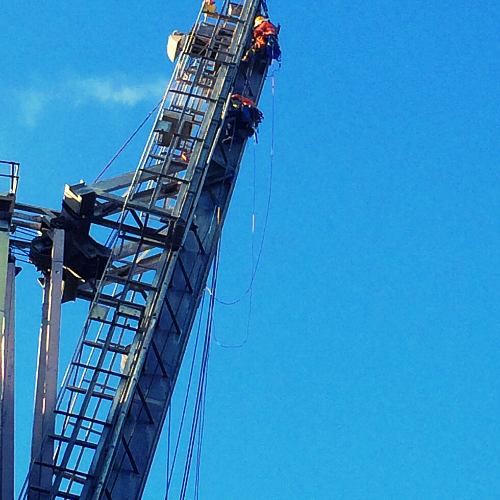
Poor rescue kit selection is one of the biggest issues we see on the job. And it’s not just an inconvenient, expensive mistake. Having the wrong rescue kit is extremely risky.
When your kit doesn’t match your skills or site or situation, you’re forced to improvise and compromise. And in a rescue scenario, that could be fatal.
To avoid the same fate, you need a rescue kit to match your requirements.
Rescue Kit Requirements
The right rescue kit will be determined by three things – your site, your work and your users.
1. Site Requirements
Are you working on the roof of a residential building – or the side of a skyscraper? Perhaps you’re on an industrial site – like a telecomms tower, a wind turbine or a storage silo? Perhaps you’re below ground – say in a dry or wet well. Or in a non-vertical space – like a tunnel. Or maybe you’re working on a bridge over water.
Your working environment matters. It will have a direct effect on the kind of kit required.

Low Rise Site
Low rise environments include residential sites or commercial sites with low-level structures (warehouse, storage facility). As low rise rescues don’t involve abseiling, a simple pre-rigged kit will do (rope, anchor strap, lowering system, carabiners)

High Rise Site
A high rise site is more difficult and dangerous. A rescue on a high rise site will require more gear, skill and experience. High rise rescue kits use more rope, higher strength-rated elements and included added extras like a mini-haul system

Top Down Rescue
Most sites will suit a top down rescue (lowering a casualty to the ground). As such, there are top down kits for residential, commercial and industrial settings. They can also adapt to cater for non-linear descent (to avoid power lines, hazards, etc)

Bottom Up Rescue
At times, a casualty may need to be raised – not lowered – to safety. For example, in a well, above water or other hazards. In such settings, a rescue kit with a haul system is required. These come with variations in haulage strength and length
See: Haul & Rescue Kit

Confined or Difficult Space
Confined or difficult-to-access spaces are not easy to work in, let alone perform a rescue. A confined space kit with retrieval winch for rescue may be best suited for these types of rescues. Do not buy or use without expert advice
2. Work Requirements
If you’re lucky, you’ll find a rescue kit that fits your work right off-the-shelf. But if not, you can add to or customise your closest-fit kit in order to meet your work needs.
However – for your own safety – always talk to an expert before doing this. Never ever DIY your rescue solution!

Roof, Civil, Construction
For roof workers, civil or construction workers in low rise industrial, commercial, residential settings, rescue kits will likely be pre-rigged. They may also include extras like a telescopic pole to enable a remote (vs arms-length) rescue

Telecomms & Utilities
In telecomms/utilities, work is done in small teams and often across remote high rise structures (towers, cranes, pylons, poles). Using a two-person rated rescue kit will support abseil access and a pick-off rescue (clip casualty to yourself and raise/lower) if needed

Building Trades/Maintenance
For regular-use suspended platforms (window cleaning, signage, painting, maintenance) a permanent rescue solution may work best (independent lifeline, user-connected fall arrest). Otherwise use a bi-directional controlled descent kit
3. User Requirements
Last – but by no means least – it’s imperative your rescue kit suits the skills and experience of your users. A kit used incorrectly in an emergency could be almost as dangerous as no kit at all!

Beginners
Simple, pre-rigged rescue kits are best for beginners. They’re easy to use. They’ll likely have items you’re already familiar with (makes a difference in a rescue). And they come ready to go, with everything you need right out of the box

Mid-Level
Users with abseiling and rope access skills can perform more difficult and technical rescues. Using a kit with a bi-directional controlled-descent (one end of rope descends as the other rises) they could also evacuate multiple workers

Experienced
A pick-off rescue is highly technical and should only be performed by rescue technicians with a high level of experience and skill. It requires the rescuer to abseil to the casualty, safely extract and connect directly to them, before lowering both safely to ground
Before You Purchase
By now, you should have more than enough to shortlist suitable rescue kits.
However, this is not a decision you want to get wrong. And the general information above is not the same as expert advice. So, we encourage you to talk to one of our rescue technicians before you make any decisions.
Talk to a Rescue Expert First
With 20 years of experience under our belts, we know what works where and can guide you through the selection process. We’ll also check you’ve accurately assessed your needs so that you’ll get your best fit rescue kit.
Handover to a Rescue Expert?
Finally, it’s important to note that shouldering the responsibility of a work-at-height rescue isn’t for everyone. So before you rush in, step back.
Because a successful rescue isn’t just about buying the right rescue kit. You’ll need to plan, prepare, train, practice and ultimately (potentially) perform a rescue. It’s a lot to take on. So if it’s not for you – that’s okay.
Our rescue team can provide planning support, rescue training and on-site practice supervision. We also provide standby rescue services for clients who want to leave rescue entirely to the experts. The choice is yours.
